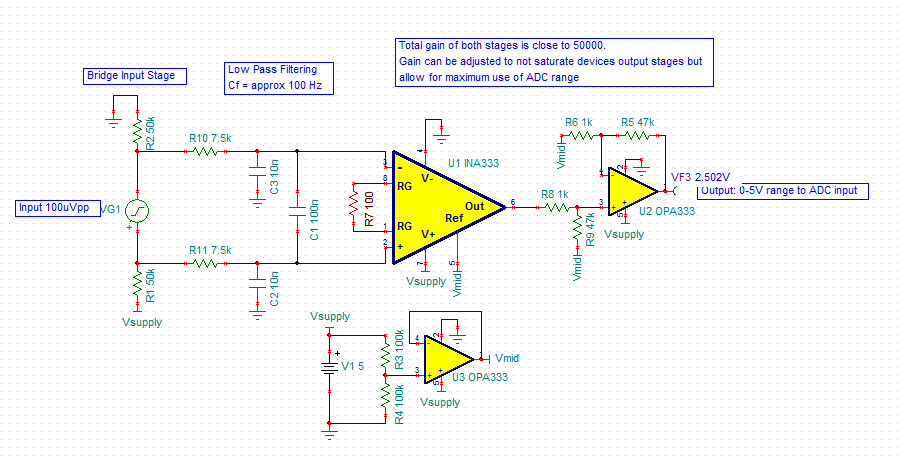Hi,
Back in 2013, there was a post on measuring microvolt signals. Michael Mock responded that one should us an ina333 instrumentation amplifier (5852.Shardul_Bridge_Sensing_10.4.13.TSC). I do not know if the person tried the suggestion or not.
I have a similar need. I have to measure the transient pressure variation in a chamber which lasts about 2 ms (measurement bandwidth of a couple kHz). I was going to attempt a solution as suggested above but the cmrr is in the order of 100 dB. If the cm voltage on the bridge is 2.5 volts, the smallest signal the I could measure might be about 25 uvolts. This is not sufficient for me. I would like my minimum to be 1 uvolt or so. If I am correct, is there anything else that I could do? Would I have a better chance to succeed if I used the ina333 in a dual supply mode instead of single ended so the cm voltage from the bridge 0 if properly balanced? Would this relax my cmrr requirement?
Michael did not address the power supply requirement. I suppose I would also need a low noise supply for this measurement.
A completely difference approach would be to use a adc such as a ads12701. This would have the bandwidth I need and I believe a better cmrr too. This would be a more complex solution since a processor would have to be interfaced between the adc and computer. The ina333 approach could use an oscilloscope to collect the data.
Thanks.
Al


